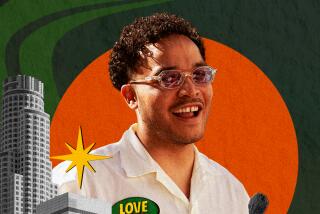Suffer the Little Children, Yes, Even in Affluent O.C.
- Share via
I can’t remember if this is the Year of the Children, or the Decade of the Children, or merely the Long Weekend of the Children. It seems that President Bush proclaimed that we were going to start paying more attention to the children, and Lord knows they need it.
All of which makes the timing of a survey released today all the more relevant. An advocacy organization named Children Now did a statewide survey and reported a nearly 50% increase in the number of children living in extreme poverty in Orange County.
That might spark disbelief in some quarters, among people who can’t believe it can happen in this pocket of plenty, but it comes as no surprise to the public health workers who regularly tour the county’s depressed areas. They see statistics like that and say with a shrug, “Tell us something we don’t know.”
If poverty just meant not having much money, it would be more palatable. But all too often, there is an unbroken line between poverty and a child’s poor health.
Carmen Molina has been with the county’s Health Care Agency for 10 years. As a medical assistant, she’s helped keep records for lots of families at lots of health clinics, such as the “well-baby clinic” she supervised Thursday at Corbin Community Center in Santa Ana.
A decade ago, Molina said, the mothers who would show up at such clinics amounted to a trickle. Now, on a typical day at this Santa Ana satellite, as many as 60 mothers will bring their youngsters.
As a “well-baby” clinic, the Corbin site is used mostly for routine physical examinations and immunizations of infants and youngsters up to about 7 years old. The staff also gives nutritional and preventive health care advice, and if the nurses or doctors on duty detect potential serious problems, the family can be referred to a specialist.
These mothers, most of them on welfare and many of them single parents, are trying to give their kids a fighting chance. Because these mothers have maintained contact with health officials, the children are in relatively good health. In that sense, they belie the often inescapable link between poverty and poor health.
“Many of the families here in Santa Ana live in apartments with two bedrooms, and they have three or four families living in them because they sublet rooms to other families,” said Eugenia Orellana, a public health nurse. “Most of these families have from three to five or six children in one bedroom, sharing one bath, one kitchen. There’s a very high risk to getting all kinds of diseases.”
Living situations like that often stem from unemployment. “The other problem is that these people don’t have jobs,” Orellana said. “Most of the time, the mothers are caring for the children, and the fathers are stopping at the corner, looking for a job. So, they have no job and no insurance. The kids go to bed hungry, they don’t grow well and they don’t do well in school.”
And, since many of the parents are in the country illegally, they are sometimes wary of seeking out help when a child is sick.
I mentioned the figures in the Children Now report, and Orellana said she wasn’t surprised. Nor is she especially optimistic about reversing the poverty trend.
“There are so many people coming in (from Mexico),” she said. “They’re bringing their families and relatives. But if you asked them if this is worse than what they’re coming from, they would say no.”
In that sense, I suppose we can rationalize some of the poverty figures. By American standards and from a coldly statistical point of view, many of these children are in desperate condition. But it’s entirely possible that they can be poverty-stricken in America and still be better off than they were a year ago.
I asked the staff how it handles the constant reminders of child poverty. “We’re not unaware of the poverty, but it’s not what shows,” said Hyde Leland, a retired pediatrician who works part time for the county at its health clinics. “We think of the cute little kids and the love their mothers give them.”
The doctors and nurses know that for every child who’s immunized or for every parent who’s given nutritional information, there are others who won’t get the message.
That’s probably why, in one corner of the clinic Thursday, Grace Ceniceros, a staff member of the Community Development Council, sat with application forms for a new federally funded supplemental food program. The grant will enable the county’s Community Development Council to provide food for up to 4,700 people a month. So far, only 1,800 have been served.
Ceniceros is worried that the word hasn’t gotten out. “My husband says I’m not cut out for this,” she said. “Too sentimental.”
I asked if she could find any ray of hope for the end of the poverty cycle. She had to admit she couldn’t.”
“I have two grandsons,” she said, “and it gets scary to think of the way things are going.”
Dana Parsons’ column appears Wednesday, Friday and Sunday. Readers may reach Parsons by writing to him at The Times Orange County Edition, 1375 Sunflower Ave., Costa Mesa, Calif. 92626, or calling (714) 966-7821.
More to Read
Sign up for Essential California
The most important California stories and recommendations in your inbox every morning.
You may occasionally receive promotional content from the Los Angeles Times.









